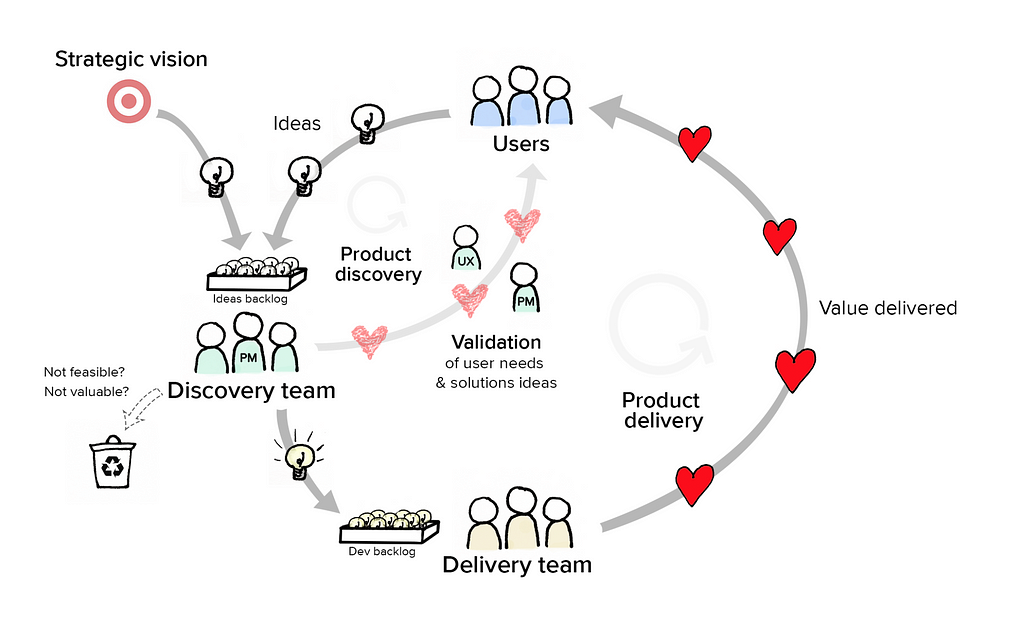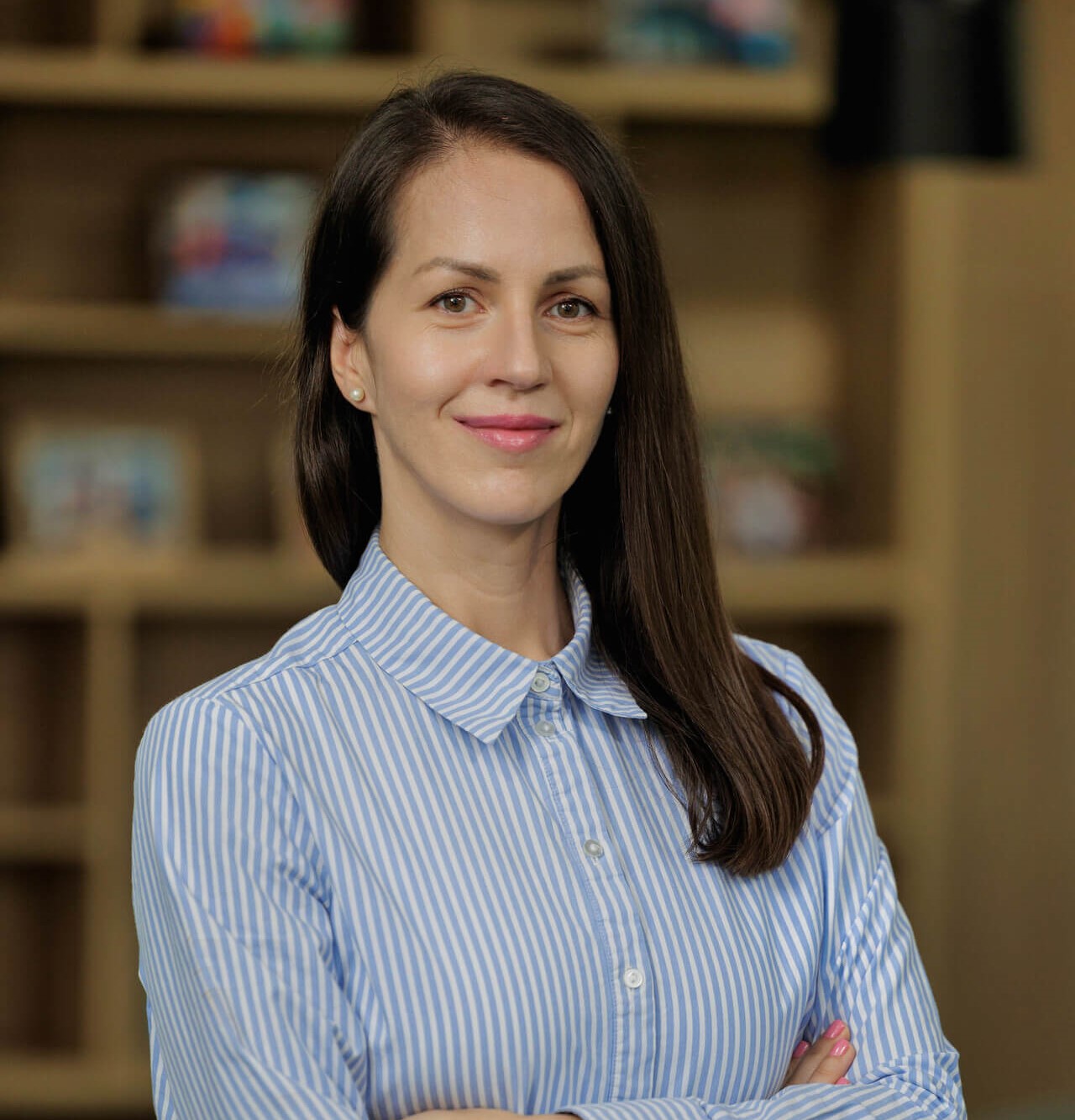To avoid building products that nobody wants, extensive Product Discovery is essential before embarking on the actual development process.
What is Product Discovery?
Product discovery is a dynamic and iterative process that lays the foundation for successful product development. It is the process that helps product teams understand the real problems and needs that people have and then figure out the best ways to solve them before starting development.
The concept of product discovery originated during the 1990s. During that era, companies allocated substantial portions of their marketing budgets to persuade customers of their product’s necessity. Unfortunately, this led to a lot of very expensive failures, as products often made it to full release before companies realized that people just didn’t need or want them.
The main goal of product discovery is not to ship features but rather to promote a continuous environment of learning that will help improve the product incrementally and consistently.
Product discovery is all about de-risking. As Marty Cagan puts it in his book “Inspired”, the purpose of product discovery is to address these four critical risks:
- Value risk – Will the customer buy this or choose to use it?
- Usability risk – Can the user figure out how to use it?
- Feasibility risk – Can we build it?
- Business viability risk – Does this solution work for our business?

The product Discovery process can be divided into these 4 phases:
1. Understanding Users
The first phase is all about user research and building empathy for our users. We must be able to put ourselves in users’ shoes, and that can be achieved only if we truly get to know them, listen to what they are saying, and learn about their habits, desires, and frustrations.
To achieve this understanding, several steps can be taken:
- Conduct Surveys and User Interviews: Engaging with the target audience through surveys and user interviews provides valuable insights into their preferences, pain points, and aspirations. This step helps in identifying genuine problems that need solving.
- Continuously Ask “Why” (The Five Whys method): By consistently questioning the reasoning behind the product, teams can uncover deeper insights and align their solutions more effectively with user needs.
- Observe users and create empathy maps: By synthesizing and visualizing the data from user research and interviews, empathy maps can help us identify key insights.
2. Defining the Problem
With a better understanding of the users, the next step is to precisely define the problem or need our product intends to solve. That can be done by analyzing the user research data we gathered and finding patterns that emerge from this data (using the Affinity mapping technique). By prioritizing the most important problems for users, the team can decide which user problem they want to focus on and clearly define their hypothesis before jumping into solutions.

3. Ideating and Prioritizing
Once we know what the user problem is, we should continue to the Ideation phase so that we can slowly come to the solution of the problem. This phase consists of gathering different ideas from the team (using brainstorming, mind mapping, or similar techniques) on how we can respond to the users’ problem or need. At the end of this phase, we have to prioritize the idea for which we are most confident it will bring value to the users so that we can continue prototyping and testing our hypothesis.
4. Prototyping and Validation
The final stage is about building a quick prototype to be tested and validated to gain confidence that the right product is going to be moved into the product delivery process. Prototyping ensures that the product solution aligns with the identified customer need and that users can navigate through the potential solution effectively.

Product discovery is the bedrock of successful product development. It empowers businesses to create innovative solutions that genuinely address user needs and desires. By deeply empathizing with the target audience, conducting thorough research, and actively listening to feedback, companies can build an environment of continuous learning and craft products that resonate deeply with their customers.
Olgica Strezoska, Principal Product Owner at Damilah
Typically, the process involves reviewing the company’s technology and technical infrastructure, including architecture, scalability, security, performance and reliability of products and services. Also understanding the people and their approach to software engineering, processes used and how closely they are engaged with their customers.
All software products, even new ones, tend to have technical debt, which may vary from areas of the code which may need refactoring to support scalability/performance future requirements to utilizing out of date or even obsolete versions of third party products. It is important that engineering teams have an understanding of their technical debt and a plan to manage it.

Modern software product teams tend to invest in devops and automation of both their delivery pipelines as well the testing of software. This is sometimes difficult and expensive to reverse engineer into long established “old tech” products, but is likely to be important to resolve if these products are expected to change significantly as part of the investment thesis.
It is also really important to review any major work-in-progress projects, especially where technology which is new or unfamiliar to the engineering team is being used, for example where public cloud is involved. Public cloud offers many opportunities to introduce time and money saving infrastructure as a service, but used in the wrong way may in fact incur significant additional costs. Understanding best use of cloud and the opportunities presented may be important to support value creation opportunities.
One of the biggest challenges I hear about when talking to investors occurs when they receive the Tech DD report from one of the third parties who have productised the process. Lots of analysis and data is presented outlining all the various potential areas of concern in a neatly structured form.
The question is then “So what?”. As a CTO what would concern you? I have been involved in many Tech DD activities as a CTO, either whilst performing that role on a full time basis, or as an independent consultant asked to advise an investor. Being able to see the wood for the trees and raise red flags is an important part of the role, as well as looking for opportunities to improve productivity and customer engagement.
Assimilating all the data and turning into a workable plan can be quite a task depending upon the size of the organisation. Sometimes the selling business is deliberately obfuscating with information, which itself tells a story or denies access to key technical people so as not to unsettle them.
At Damilah, we have extensive experience conducting technical due diligence activities, particularly for product software companies. As product experts ourselves, we understand how to build a great product and the day-to-day challenges which may occur.

We have deep technical expertise of legacy applications as well as modern cloud SaaS products and understand the needs of investors wishing to create value and scale businesses they acquire and what the barriers to these may be.
We also have teams of highly talented software engineers able to tackle the most complex transformations from monolithic to micro-services, or from on-premise to cloud native SaaS solutions, working closely with existing client teams. We adopt a modern agile way of working , to deliver maximum value to the customer in the shortest possible time, with full visibility for all stakeholders.
In particular we have extensive experience of working with Private Equity houses and their portfolio companies, understanding well the need for value creation to support the investment thesis, having worked ourselves in these environments.
To discuss further, please contact iain.bishop@damilah.co.uk.
Iain Bishop, CEO and Founder at Damilah